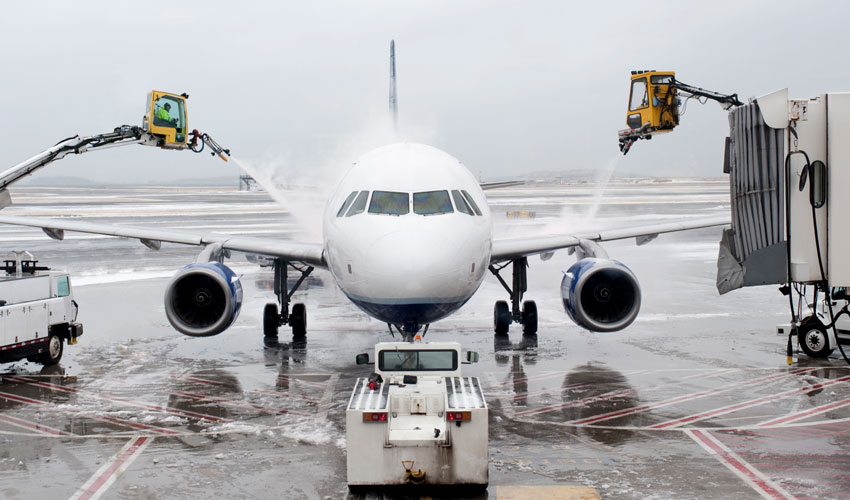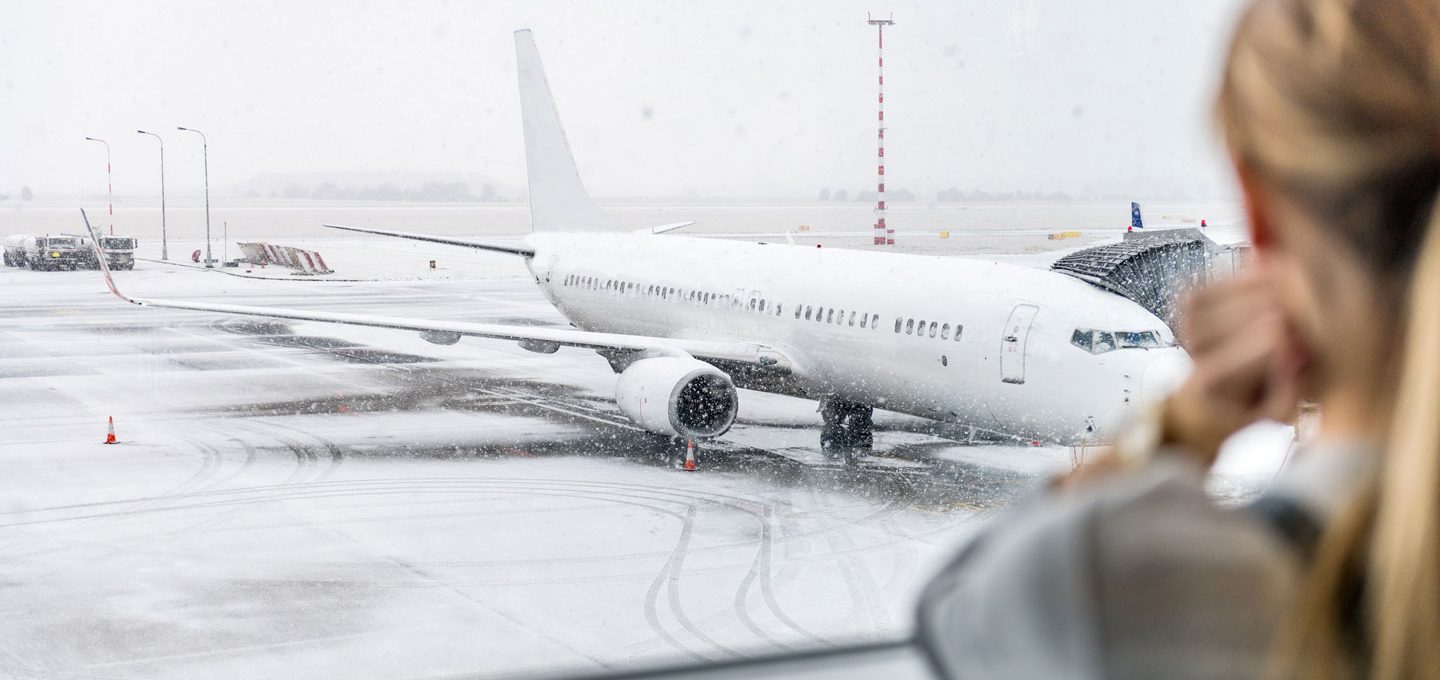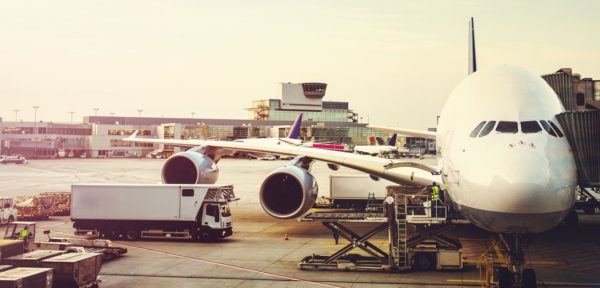Winter presents unique challenges for regional airports, where aircraft de-icing becomes essential to ensure safe flight operations. Unlike larger hubs, these airports often have limited resources and must find ways to efficiently handle snow and ice to prevent disruptions and maintain on-time departures.
In this article, we explore the hurdles regional airports face in the cold months. Furthermore, we discuss how ground crews can efficiently manage the de-icing process using advanced solutions to keep operations under control.
Why Aircraft De-Icing is Crucial for Regional Airports
Aircraft de-icing is defined as the process of removing surface frost or ice from vital areas of an airplane, such as the tail sections and wings, before taking off. Ice on aircraft surfaces disrupts airflow, affecting lift and overall flight performance. As a result, the risk of accidents increases. Timely de-icing is key to safeguarding the well-being of passengers and crew on board.
Beyond safety concerns, weather-related delays are a major operational challenge. In particular, snow and freezing rain can disrupt thousands of flights annually. Although regional airports usually have fewer flights than major hubs, these delays can quickly escalate, leading to bottlenecks that affect flight schedules for hours. Understanding that airports can mitigate delays through optimized aircraft de-icing is critical for maintaining efficiency and customer satisfaction.
Top 3 Challenges to Navigate
When it comes to planning and executing aircraft de-icing, three key challenges can be identified:
1. Limited Staff and Equipment
Many regional airports operate with minimal de-icing equipment, often relying on a handful of trucks and a small crew. This shortage of resources makes it challenging to keep up with demand during heavy snow or ice events. If de-icing equipment breaks down or malfunctions, there may not be enough backup equipment to keep operations running smoothly. Smaller airports may also lack specialized equipment, such as advanced multi-function de-icing vehicles commonly found at larger hubs.
2. Extreme Weather Conditions
Airports in northern and remote regions face some of the most challenging weather conditions, including snowstorms, blizzards, and ice fog. These conditions make it difficult for crews to apply de-icing fluids. Rapid temperature fluctuations can also cause de-icing fluid to freeze too quickly or become ineffective. Such conditions can extend the time required to prepare aircraft for a timely and safe departure. In fact, according to the Federal Aviation Administration (FAA), extreme weather conditions are the leading cause of flight delays. They account for 75.48% of delays lasting more than 15 minutes over a six-year period (2017-2022).
3. Issues with De-icing Fluid Supply
Storing and managing de-icing fluids like glycol-based solutions is costly and requires significant planning. For remote airports, maintaining an adequate supply throughout the winter season can be difficult, especially due to infrequent deliveries. This makes it crucial to monitor fluid inventory closely to avoid running out during peak icing periods.

How Can Regional Airports Overcome These Challenges?
1. Efficient Resource Management
Efficient management of available resources is crucial to handle challenges in aircraft de-icing. Advanced software solutions help maximize the utilization of staff, equipment, and remote de-icing areas, ensuring that every resource is used to its fullest potential. By automating key processes and optimizing the scheduling of tasks, airports can significantly reduce delays. Moreover, these solutions enhance operational transparency by providing real-time updates on equipment status and task progress, enabling dispatchers to make better-informed decisions.
2. Improve Communication
De-icing operations demand clear and smooth communication across teams. Airports should work closely with airlines to prioritize which aircraft need de-icing the most, based on factors like departure times and flight importance. This helps prevent bottlenecks and ensures that high-priority flights are not delayed unnecessarily. AI-based solutions reduce the need for voice communication by automating processes, allowing crews to focus on the most critical tasks. The ability to easily send and receive task progress information further improves overall service quality.
3. Collaborative Purchasing and Equipment Sharing
Smaller airports can pool their resources with nearby facilities to share de-icing equipment or bulk-buy de-icing fluids, reducing costs. This strategy allows them to benefit from economies of scale and ensure they have enough fluid stock for the entire winter season.
4. Training Programs
Crews at regional airports often perform multiple roles. Continuous training allows them to switch tasks more efficiently. Ensuring that all personnel are proficient in de-icing techniques and can adapt to changing weather conditions is key to maintaining productivity. Refresher courses on the latest de-icing procedures, fluid types, and safety protocols will help crews stay prepared during winter months.
Innovations Boosting Aircraft De-icing
The future of de-icing is being shaped by innovations and environmentally sustainable solutions. One key trend in the industry is the adoption of advanced de-icing technologies, such as infrared heating and electro-mechanical systems. Infrared technology, for instance, allows airports to de-ice aircraft more quickly by using heat to melt ice, while electro-mechanical systems prevent ice buildup without relying on chemical de-icers. These systems reduce the need for traditional de-icing fluids, minimizing the environmental impact and reducing operational costs over time.
Another trend driving innovation is the increased investment in research and development of new de-icing fluids that are more effective and environmentally sustainable. These new formulations aim to reduce the ecological footprint of de-icing by using biodegradable components, while also improving the efficiency of ice removal during harsh winter conditions.
As these technologies and innovations continue to evolve, regional airports will have greater opportunities to improve the speed, safety, and sustainability of their de-icing operations, ensuring that flights remain on schedule while reducing their environmental impact.
Final Thoughts
De-icing at regional airports presents unique challenges due to limited resources, harsh weather conditions, and logistical constraints. However, by optimizing resource management, collaborating with nearby airports, and investing in crew training and technology, these airports can ensure safe and efficient winter operations. With continuous innovation and a proactive approach, regional airports can tackle the challenges ahead and maintain safe skies for all.
>> How do you think regional airports can further improve their de-icing operations while balancing efficiency and environmental sustainability? Share your thoughts in the comments.





0 comments on “Aircraft De-Icing at Regional Airports: Tackling the Challenges”